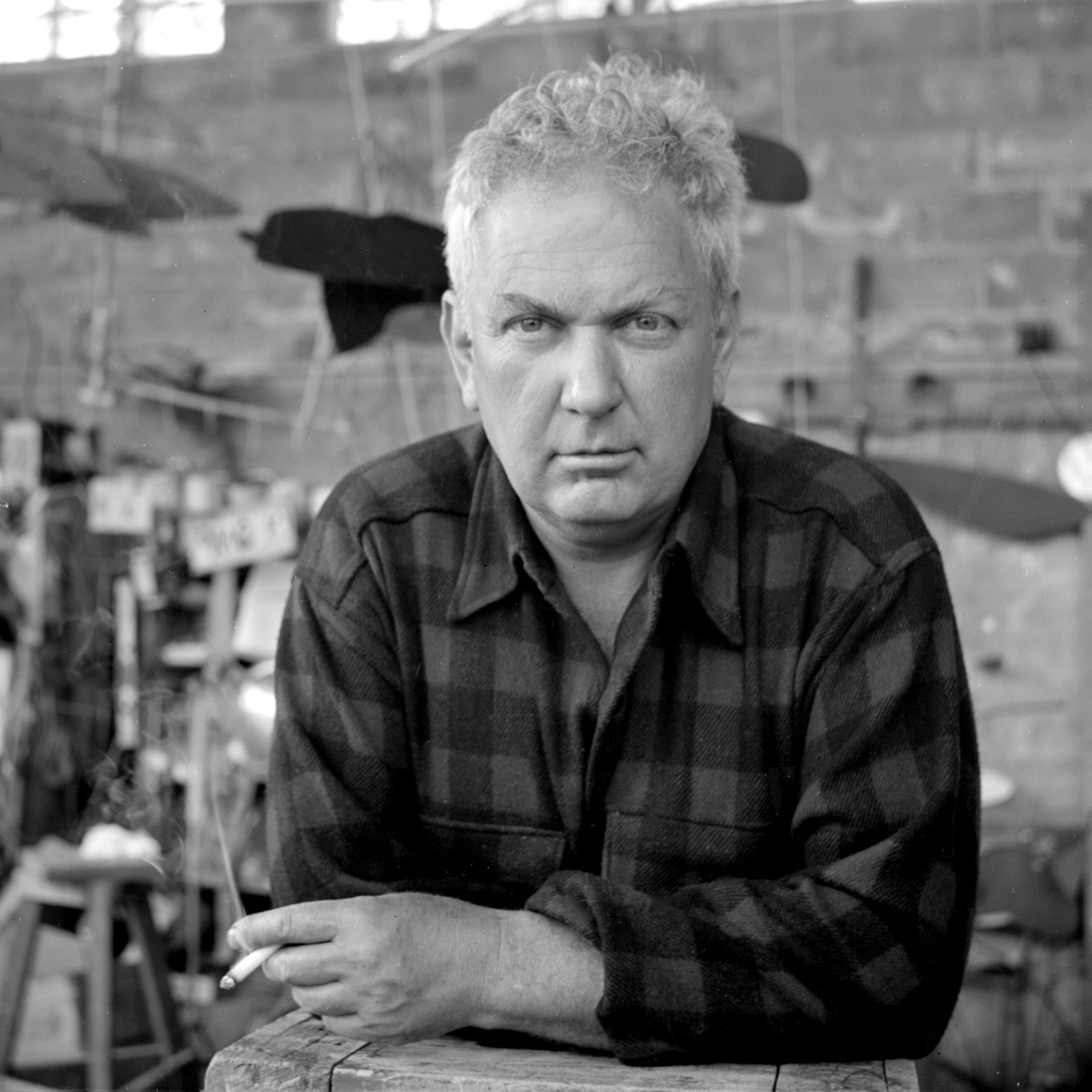


Alexander Calder is best known for creating mobiles—sculptures composed of abstract shapes moving through space. Born in 1898, in the Philadelphia area, Calder came from a family of artists. Both his father and his grandfather were sculptors. After graduating from the Stevens Institute of Technology in 1919 with a degree in mechanical engineering, Sandy
, as he was known by his friends, held various jobs before entering the Art Students League of New York in 1923. At first a painter, he studied under Thomas Hart Benton, George Luks, Kenneth Hayes Miller and John Sloan and was a classmate of John Graham. In the early 1920s he worked as an illustrator, covering such events as the circus. His sketches of circus acts rekindled his childhood fascination with animals, a subject that became central to his art. In 1926 he went to Paris for the first time and stayed there until the fall of 1927. An active participant in the avant-garde milieu of Paris between the two World Wars, Calder had a wide circle of friends and colleagues in the arts. He met many of them through performances of his entourage of small sculptures, Circus, in the late twenties and through his membership from 1931 in the Abstraction-Création group, a loose alliance of artists promoting diverse multi-national trends in abstract art.
He began making small moveable animal figures in wood and wire, using wire as if he were drawing in space. By 1928, Calder was exhibiting his wire sculptures both in the United States and France, where he resided periodically throughout his life. Calder created his first abstract wire sculptures in 1931 and that year Galerie Percier, Paris held an exhibition of these works, which Arp called stabiles.
By 1932, Calder composed his forms with the intention of making them move through space. First he experimented with motorized sculptures. But soon, by precisely adjusting the weight and balance of each shape, he created works that floated through space, propelled only by air currents. Known as mobilesand later standing mobiles and stabiles, the term was coined by Calder’s fellow artist, Marcel Duchamp.